Actually the circuit you have after a few tweaks would be pretty good, although I didn't look up the particular opamp to see if it is appropriate for this use.
The first change I'd make is to put a cap to ground on the + input line to the opamps. Since the impedance is 5 kΩ, 1 µF would give you a rolloff of 32 Hz, which is fine since we're only trying to keep power supply noise from feeding into the amplifier.
The 220 nF input capacitor should be a bit higher. As it is now, it will form a low pass filter with the 4.7 kΩ resistor in series with it with a rolloff of 155 Hz. That's a bit skimpy, although perhaps your mic can't support frequencies lower than that. Still, I'd make it at least twice what it is, but more likely use a 1 uF cap. However, make sure not to use barium titanate or related ceramics because those exhibit microphonics. Just putting two of the caps you already have in parallel could be good enough.
Your voltage gain is only 100. You probably want more to make 5 Vpp from a electret mic. With this gain, you need 50 mVpp from the mic, which sounds a bit high. Maybe you're fine as is if you will be using a high enough resolution A/D so that the signal can only use part of the range most of the time, but you want overhead in reserve for short but loud sounds.
The 1 uF output cap allows you to float Vout at any level you want. Since you want 2.5 V, float it at that. A simple way to do that is to connect it to a voltage divider from the 5 V supply. Two 100 kΩ resistors would do that nicely.



